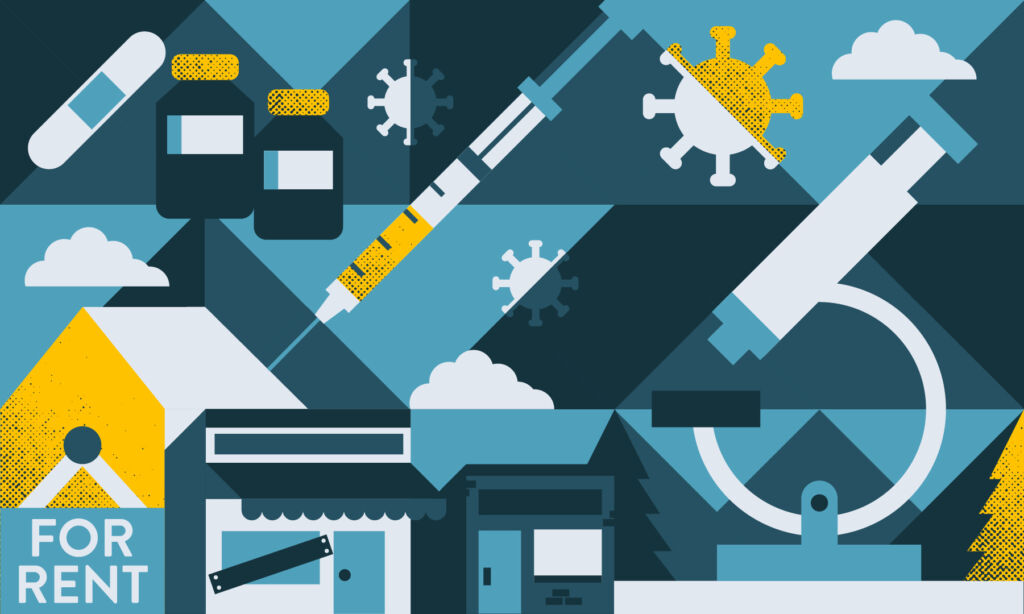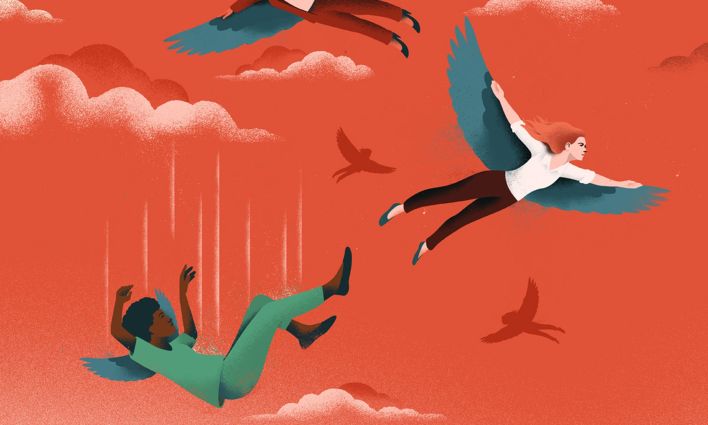With provincial economies starting to reopen, we need to take a close look at the workers most at risk. Reopening is sometimes framed as if allowing businesses to switch on the “open” sign will immediately return everything to normal. But there are many more important considerations: workers and consumers need to feel safe in returning to businesses even if the “open” sign is on. Health and safety measures are a prerequisite to employment resuming, not an impediment to it.
This blog presents a preliminary analysis of which workers are most at risk of being forced to choose between refusing unsafe work or losing CERB, and will be updated when the April LFS data is published on May 8th.
Although the Canada Emergency Response Benefit (CERB) has been a critical support, for almost all workers it pays less—sometimes much less—than what they would have made while working. In returning to their jobs, workers rightly fear for their health and that of their children, neighbours, friends and parents if they’re going to be exposed to COVID-19 in the workplace. Some workers may prefer to receive the smaller CERB amount and stay safe at home rather than return to a workplace where protections are inadequate, even if they make less money as a result of this decision.
However, as it’s presently structured, the CERB may force a terrible choice on workers: income or health, but not both. As in any crisis, there will be good and bad actors on the employers side. Some will continue to work hard to protect their employees by obtaining hard to find PPE, by setting up protective shields for workers, by promptly disinfecting stores upon COVID-19 infections and so on.
Unfortunately, other employers will be far too willing to prioritize corporate profits over worker health. We’ve seen this already in the meat packing industry. The Cargill meat packing plant in southern Alberta—the site of North America’s largest single COVID-19 outbreak with more than 900 confirmed COVID-19 cases—reopened this Monday, despite 85% of workers reporting they were afraid to return to the plant. The US also provides a number of examples where low wage workers have effectively been ordered back to unsafe workplaces. In Canada, the forced closure of non-essential businesses have taken these sorts of choices out of employers’ hands, but that will rapidly change as provinces open up.
Most workers left unemployed by COVID-19 are getting the CERB which, while not perfect, is far more accessible than the old EI system. Presently , there are several circumstances where one can quit and still get the CERB: if one is sick, caring for someone who may be sick, or to care for children. However, quitting a job because a workplace is unsafe and exposes them to potential infection disqualifies a worker from receiving the CERB.
Once workplaces are opened, employers will start to call workers back. If a worker doesn’t return because of concerns about workplace safety, an employer could deem that non-return as quitting and issue the employee a Record of Employment to that effect, disqualifying them from receiving the CERB. Hypothetically, if a provincial labour board upholds a work refusal due to unsafe conditions (ie. Coronavirus infection), a worker could keep receiving the CERB. But provinces like Ontario simply aren’t shutting down workplaces due to a clear coronavirus infection risk. Furthermore, there has been little movement by many provinces to investigate unsafe workplace complaints due to COVID-19, and there seems to be no particular drive to ramp up labour protection programs.
The discussion of “worker incentives” has already started, which really means cutting off basic income supports from low wage workers to force them back to work, putting themselves and their families at risk of infection. Conversely, there is almost no discussion of “employer incentives” to create safe workplaces. The narrative is being set: if businesses are allowed to reopen but workers don’t return, the workers—who are prepared to live off the supposed king’s ransom of $2,000 rather than working in potentially unsafe workplaces—are to blame for their greed. On the other hand, the same level of pressure is not being applied to employers to make necessary investments in shields, PPE and policies that will help keep their workers safe when businesses gradually reopen.
Which workers will be “incentivized” towards risking their and their family’s health for corporate profit in the coming reopening? This analysis creates four equally sized groups of workers based on a score of their occupation’s physical proximity to others. Those with the most physical proximity to others in their line of work are labelled “high risk” because they can’t readily socially distance at work, and will require the most employer funded safety measures to stay safe. This analysis will be updated following the April LFS release on May 8th with more detail, likely showing even more workers at risk if they are forced back to work.
Employees at “high risk” are those who earn the least. In February 2020, 43% of workers making $14/hr or less were at high risk of exposure. Those making $14/hr to $16/hr fare only slightly better with 39% of them at high risk. Compare that to the top decile of workers—those making over $48/hr—where only 11% are at high risk.

Normally, being laid off is not a desirable event. But during COVID-19 it protected large numbers of workers at high risk of exposure due to physical proximity in their workplaces by keeping them home in March. This was particularly true for low wage workers. However, if businesses were to reopen to the level we saw in February, those high risk workers would lose the “protection” that those layoffs afforded them.
In February, 43% of low wage workers were at high risk. However, by March only 31% of those employed in February were still at high risk as they either weren’t working or had lost the majority of their hours due to the pandemic. This amounts to 195,000 high risk, but low paid, workers being protected from COVID-19 through layoffs—layoffs that will turn to recalls as businesses are allowed to reopen.
As restrictions are lifted, the 540,000 workers making under $19/hr—the bottom third of workers by hourly wage—who had been protected by government-enforced layoff may soon have to choose between health or income. Some will get both if their employers put health before profit and provide adequate protections for workers, even if it squeezes their bottom line. But other employers will force workers to make an impossible choice.

While provincial action on labour regulations and sick leave policies are one part of the puzzle, the federal government could put its thumb on the scale and “incentivize” businesses to do the right thing. Presently workers can quit and still receive the CERB due to child care or caring for someone who is sick. The CERB could be expanded to include workers who quit due to an unsafe workplace. That change would remove the “stick”—if workers refuse to return to the workplace, they’d have “quit” and therefore lose the CERB—that employers have. Instead it would force employers to use the “carrot”—to demonstrate to workers that adequate protections are in place to ensure their workplace is safe—for workers to return to their jobs.
Health versus income is an impossible choice, and one no worker should be forced to make. Expanding the CERB to acknowledge the need for safe workplaces means they won’t have to.
“Incentivizing” workers to return shouldn’t be about cutting off critical supports like CERB to make them desperate enough to take unsafe work. Winding down CERB at the start of July and forcing people into the much less generous EI system, as is presently the plan, is not so much a plan. Instead we should be transitioning to a modern EI system that moves beyond an emergency benefit to a better thought out income replacement program.
For media inquiries, please visit our website.







